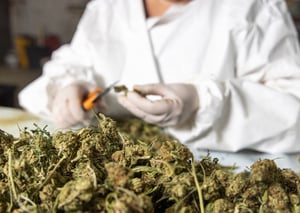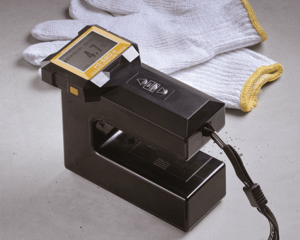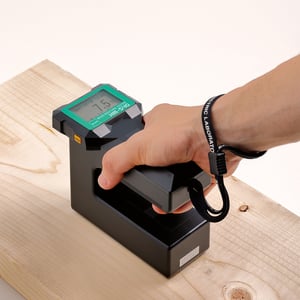 From 2018 through 2023, the hemp industry is projected to grow by $3.8 billion, with a key driver for this growth being hemp’s usefulness to the textiles industry—making hemp biomass more sought after than ever before.
From 2018 through 2023, the hemp industry is projected to grow by $3.8 billion, with a key driver for this growth being hemp’s usefulness to the textiles industry—making hemp biomass more sought after than ever before.
As the hemp industry expands and the growing and production of hemp and hemp products take off, what can be done to standardize your product?
Moisture plays a critical role in every farmer’s crop but especially in one like hemp, which is often sold by its percentage of CBD level by weight. The industry doesn’t have the same standardizations that are found in other crops, so it becomes necessary for buyers and sellers to monitor moisture levels so that the sale of the crop happens at a fair price, whether the hemp is being sold for its flowers or for its biomass.
Let’s take a look at how moisture levels and moisture meters can have a big impact on your business.
What Is Hemp Biomass?
Hemp biomass is essentially what is left after the hemp plant is harvested and after flowers and seeds have been removed. It is the remaining organic material, like the leaves, stems and stalks, that is considered hemp biomass.
In other agricultural industries and conventional farming, these leftovers might be considered waste. However, with hemp, these leaves and stems can be used in many other ways.
- Collection of oils and one day, potentially, for fuel
- A soil remediator in contaminated soil
- Fiber, cloth and cord production
- Leaves for teas
How Moisture Can Affect Hemp Biomass
Much like in the cannabis industry, moisture is crucial at every step of the growing, harvesting and drying process for hemp biomass. Too little moisture during growing and the leaves can start to turn yellow, and curl—or the plant just won’t grow.
Too much moisture when it’s drying, and hemp can become riddled with mold or mildew. This creates a toxin that cannot be removed and leads to rot. When rot happens, entire crops are lost, and farmers lose their entire investment.
This happens to farmers across the U.S. Farmers are baling their hemp without letting it completely dry, having no way to accurately measure moisture levels. They sometimes bale the hemp biomass with a moisture content of 60- to 70-percent moisture levels and lose their entire investment.
They could have saved their harvest with a moisture meter like the KJT130 to test moisture levels, let the hemp biomass dry completely and then put it into bales.
How Hemp Is Sold and Why Moisture Matters
Hemp biomass is mainly sold at a set cost per pound—all based on the amount of CBD the biomass contains. If the hemp tests at a CBD level of 10 percent and the agreed-upon price is $4 per percentage point per pound, the cost per pound would be $40.
However, this method is highly flawed. If there is too much water in the product, the buyer will overpay. Too little moisture and the farmer doesn’t make what he deserves. In other industries, like corn, this process is regulated. There is an accepted water weight content for the crop, and any crops sold outside that water content level are sold for a lesser price.
Larger processing facilities account for water weight when they are purchasing hemp biomass—accounting for various moisture levels in the biomass. This is usually a better way to determine weight when selling the product for its CBD content. But if you are buying hemp biomass for fiber or textiles, the level of CBD doesn’t matter.
Your best defense, whether you are buying or selling hemp biomass and whether or not you are relying on its CBD levels, is to stay informed. What is the actual moisture content of your product? Do you have a moisture meter to provide you with an accurate moisture reading?
Moisture Meters: What You Need
Since the quality of hemp products and hemp biomass can be negatively impacted by too much moisture after harvest, it’s crucial to ensure that your product is drying quickly and evenly. Otherwise, mold and mildew may sprout up, causing major damage to your product.
Hemp must be dried to a moisture content of 10-15 percent. How can you monitor moisture levels, then, and ensure that your product has dried to that all-important level of moisture?
You can use a moisture meter to monitor levels of moisture within your hemp biomass.
A KJT130 Moisture Meter with near-infrared (NIR) technology may be perfect for use within your drying room. It’s handheld and designed for portable use and provides instant readings of moisture levels with user-friendly operation.
Working in a lab to determine precise concentration levels of CBD (CBD/dry mass) in a particular strain or crop of hemp? The KJT230 NIR Moisture Meter has a rotating turntable to take accurate readings of an entire sample to give a better view of each plant’s moisture content because you get a heterogenous reading of an entire sample rather than a single-spot reading. If product is being dried in a manufacturing process, the KB30 moisture meter provides continuous, non-contact, non-destructive measurement to categorize and qualify the system.
Here at Kett, we’ve been working closely with the agricultural industry for decades, making us the perfect ally to help you grow and dry your hemp crop.
We know what it takes to correctly monitor harvested crops as they dry and store. We can help you find the right tools to better your growing and harvesting processes. Contact us today for guidance and more information.


